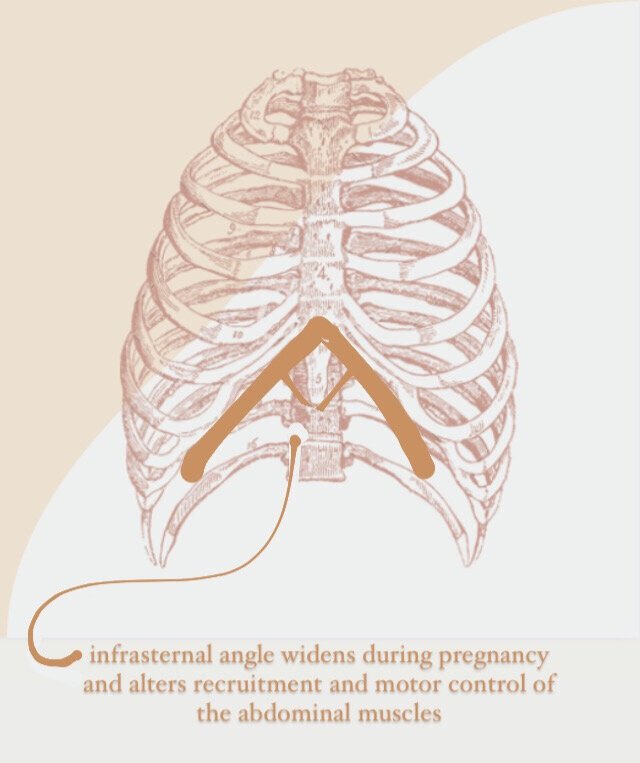Rib flare: an introduction
/Perhaps you’ve heard your coach or movement guide mention to “stitch your ribs” or some other ambiguous cue about rib positioning at one point or another. If you’re scratching your head about what that means, you are not alone.
Read on for information about what rib flare is and why it matters in part one of this series. Discover tips for correcting rib flare in part two.
What is rib flare?
When we are talking about rib flare we can be referring to two different things.
In the sagittal plane (looking from the side, see image above), the rib cage can protrude forwards and tip upwards, often occurring with excessive low back arching/extension. You can visualize this by imagining the “stick it” position of a gymnast at the end of their sequence with a big old arch in the low back and the chest proud.
In the frontal plane (looking from the front, see image below), we are thinking about the angle between the right and left front rib cages just below the sternum. This is also known as the infrasternal angle and can be seen in the image below. The ideal infrasternal angle is ~90 degrees.
frontal plane rib flare
who is affected + why does this matter?
This is quite common in the performing arts athletes I see due to repetitive movements and postural habits through sport. When athletes flare, their ability to access strength and dynamically adapt to the the task at hand is limited.
By optimizing alignment of the core, the athlete can engage, respond, and perform more accurately with less effort. This leads to long term injury prevention and improved performance… win win!
During pregnancy, the rib cage expands while the the diaphragm and abdominal organs shift upwards to accommodate the growing uterus. These incredible structural adaptations affect the structures that make up the abdominal canister.
Postpartum corrective exercise aims to restore the alignment of the ribcage, thereby supporting the restoration of position and function of the diaphragm, pelvic floor, and anterior abdominal wall. Simply stacking the ribcage over the pelvis allows for more effective recruitment of the abdominals in coordination with the core system. This can potentially have an aesthetic side effect, but functionality is always the key as I see it. Regaining alignment and control of the abdominal canister can be an important link to improving the symptoms associated with issues like abdominal wall separation, leaking, and prolapse.






